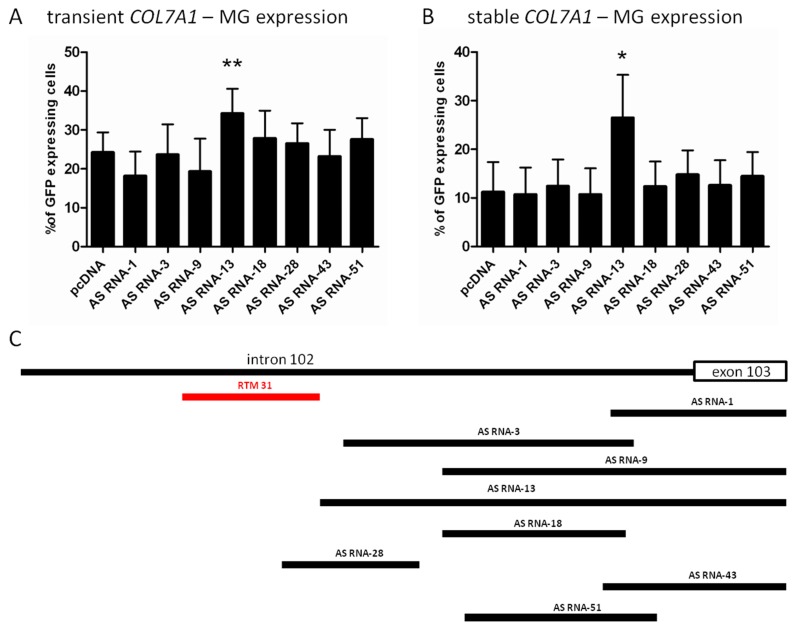Figure 2.
Comparison of AS RNA-mediated influence on trans-splicing efficiency. (A) Triple transfections of COL7A1-MG, RTM_31 and the most promising AS RNA (AS RNA-13) increased the amount of GFP expressing cells upon accurate trans-splicing from 24% to 34%. Mean + SD of five different experiments is shown. An unpaired T-test (two-tailed) was performed with GraphPad Prism software (GraphPad Software, San Diego, CA, USA) to prove the statistical significance between AS RNA-13 and the control pcDNA (** p value = 0.0073); (B) Co-transfection of RTM_31 and individual AS RNAs of the library into a COL7A1-MG expressing target cell line leads to a variable trans-splicing rate. AS RNA-13 showed the most promising effect, capable of increasing the trans-splicing efficiency of the RTM 2–3-fold on the protein level (measured by flow cytometry). AS RNA-13 was compared to the control (pcDNA). The mean + SD of 4 different experiments is shown. Unpaired, two-tailed t-test (* p value = 0.0298) confirmed statistical the significant increase in AS RNA-13 compared to the control pcDNA; and (C) Binding position of RTM_31 (red) and individual AS RNAs within the COL7A1 target region.

